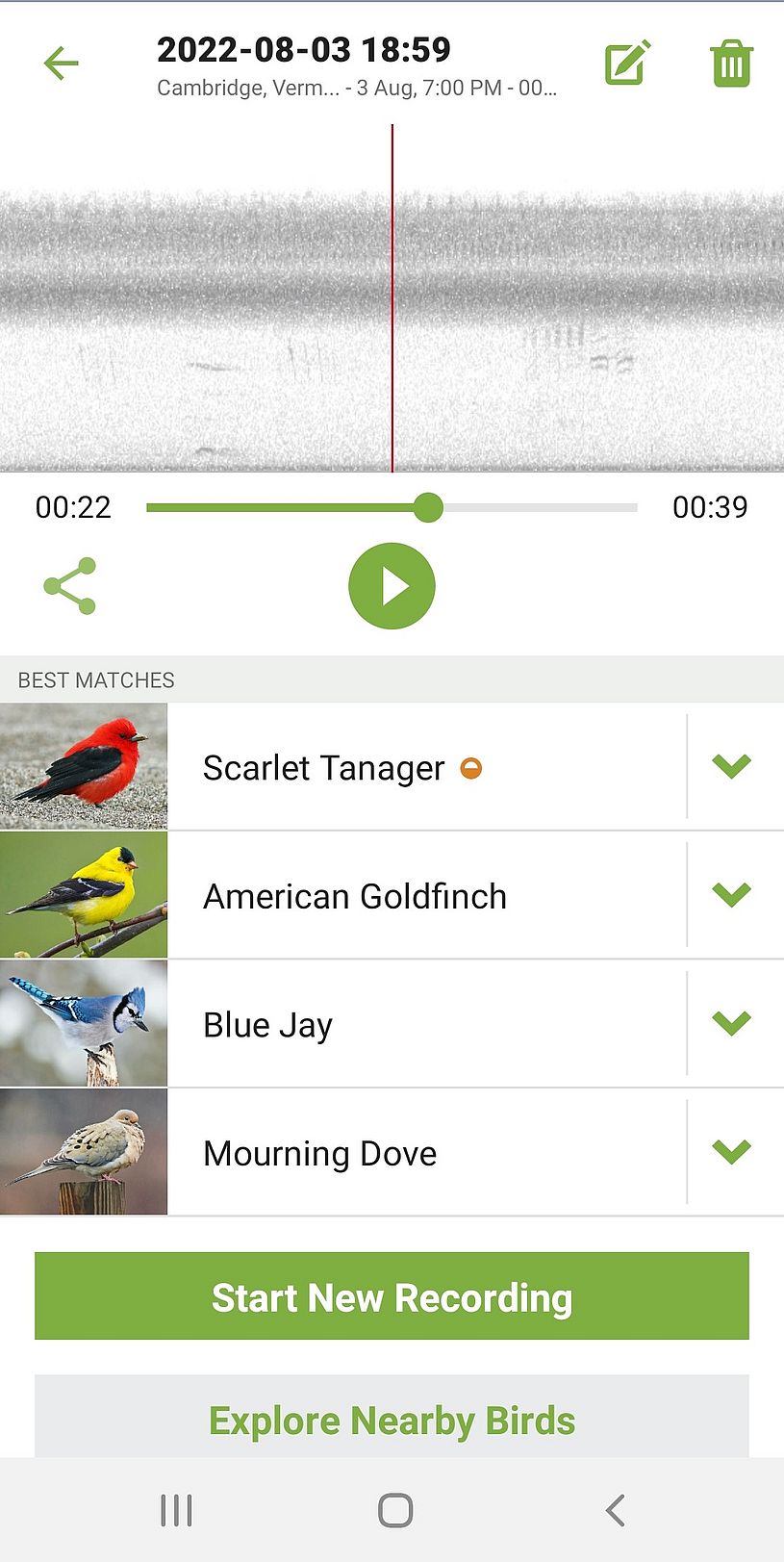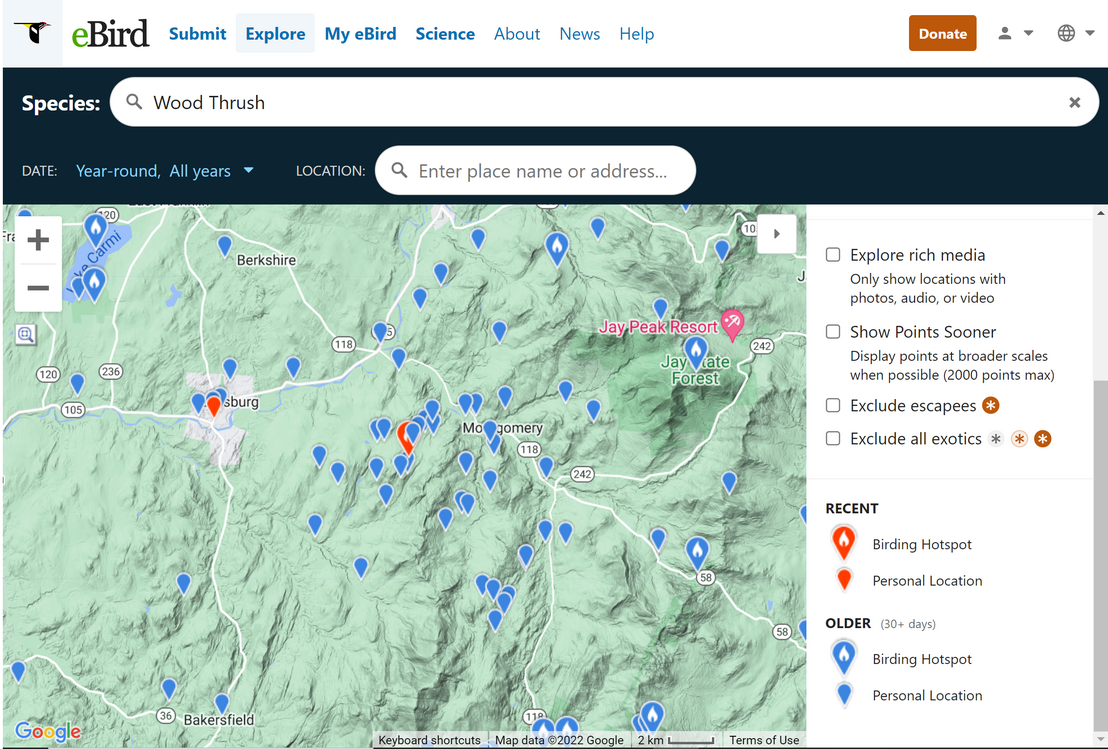Exploring eBird

A good bird outing tends to turn up a few mysteries, those birds that invite you to crane your neck skyward for another fleeting glimpse in the treetops, or to reach into your memory to recall a match for that distant song. But in the past six months I’ve noticed a new response to those mystery sounds: someone pulls a smartphone out of their pocket and starts recording with Merlin, an app from the Cornell Lab of Ornithology.
With two quick finger taps, the screen reads “listening for birds” and displays a scrolling graph of the sound frequencies- a spectrogram- in real time. As it recognizes calls, Merlin populates a list of species that light up each time that bird vocalizes again, and suddenly the wall of sound is transformed into a list of familiar (or not-so-familiar) names. That list includes the Red-winged Blackbird calling from a distant marsh or the American Crows passing high overhead, so far off that you may not have picked them up while focusing on your mystery bird. The Merlin app isn’t always right, but the accuracy rate is remarkably high, and it provides a collection of verified recordings to compare with what you’re hearing.
All this is possible thanks to eBird, the underlying database of bird lists, photos, and audio recordings that is continually updated by 800,000 users (and counting) around the world. eBird may very well be the world's largest community science project- it’s certainly the largest that collects biodiversity data- and Merlin references this database of over 70 million checklists and 10,623 bird species for ever-more accurate identification. Merlin’s photo and audio-matching tools are relatively new, but they’re driven by the core data collected through eBird since its start in 2002: birding checklists that build knowledge of when and where each species is present. That way Merlin can narrow down the 10,623 possibilities to, say, the 190 most likely in the Cold Hollow area in August.
And that’s where you can make your contribution to citizen science. Every checklist—even 5 minutes of looking and listening from your yard—helps build the accuracy of the bird database. You can submit a checklist through ebird.org or using the eBird app. It’s ok if you can’t identify all of the birds—even experts will miss birds in an area (and if you're totally new to birding, you can use eBird or Merlin to create an illustrated species list for your area and start getting familiar with who's around). The key is to report every species you can identify by sight and sound and provide counts (or approximations) for each one. Mystery birds can also be noted as “slashes” or “spuhs” (for example, Cooper’s/Sharp-shinned Hawk if you can’t tell between the two, or Passerine sp. if you know you saw a songbird species but have no idea which one). Volunteer reviewers will scan the submissions and flag any inconsistencies- or reach out if they want more information to document a rare sighting. This ensures data quality and has made eBird a reliable source for hundreds of scientific publications, and an increasingly valuable tool for land managers and conservation practitioners.
CHC received funding through the Northeast Bird Habitat Conservation Initiative (a partnership of Highstead and the Cornell Lab of Ornithology, with funding from the Sarah K. de Coizart Perpetual Charitable Trust) to offer an online eBird training and in-person workshop for our community. The workshop recording is available here. It goes into detail on how to submit checklists but also the many other ways you can use the eBird platform: to explore recent sightings of a particular species, read a species profile, find local birding hotspots, view checklists from other birders, and more. One of the most visually impressive outputs from eBird is a set of animated maps that shows the seasonal movements and abundance of birds along their migratory routes. Here’s an example for our state bird, the Hermit Thrush. eBird is such a rich resource, each visit to the website is sure to turn up new surprises and insights.
